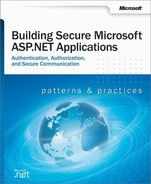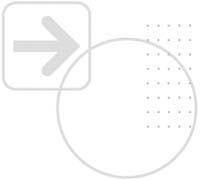Proven practices for predictable results
Patterns & practices are Microsoft’s recommendations for architects, software developers, and IT professionals responsible for delivering and managing enterprise systems on the Microsoft platform. Patterns & practices are available for both IT infrastructure and software development topics.
Patterns & practices are based on real-world experiences that go far beyond white papers to help enterprise IT pros and developers quickly deliver sound solutions. This technical guidance is reviewed and approved by Microsoft engineering teams, consultants, Product Support Services, and by partners and customers. Organizations around the world have used patterns & practices to:
Reduce project cost
Exploit Microsoft’s engineering efforts to save time and money on projects
Follow Microsoft’s recommendations to lower project risks and achieve predictable outcomes
Increase confidence in solutions
Build solutions on Microsoft’s proven recommendations for total confidence and predictable results
Provide guidance that is thoroughly tested and supported by PSS, not just samples, but production quality recommendations and code
Deliver strategic IT advantage
Gain practical advice for solving business and IT problems today, while preparing companies to take full advantage of future Microsoft technologies.
To learn more about patterns & practices visit: msdn.microsoft.com/practices
To purchase patterns & practices guides visit: shop.microsoft.com/practices
Patterns & practices are available for both IT infrastructure and software development topics. There are four types of patterns & practices available:
Reference Architectures
Reference Architectures are IT system-level architectures that address the business requirements, operational requirements, and technical constraints for commonly occurring scenarios. Reference Architectures focus on planning the architecture of IT systems and are most useful for architects.
Reference Building Blocks
References Building Blocks are re-usable sub-systems designs that address common technical challenges across a wide range of scenarios. Many include tested reference implementations to accelerate development.
Reference Building Blocks focus on the design and implementation of sub-systems and are most useful for designers and implementors.
Operational Practices
Operational Practices provide guidance for deploying and managing solutions in a production environment and are based on the Microsoft Operations Framework. Operational Practices focus on critical tasks and procedures and are most useful for production support personnel.
Patterns
Patterns are documented proven practices that enable re-use of experience gained from solving similar problems in the past. Patterns are useful to anyone responsible for determining the approach to architecture, design, implementation, or operations problems.
To learn more about patterns & practices visit: msdn.microsoft.com/practices
To purchase patterns & practices guides visit: shop.microsoft.com/practices
patterns & practices current titles
December 2002
Reference Architectures
Microsoft Systems Architecture—Enterprise Data Center 2007 pages
Microsoft Systems Architecture—Internet Data Center 397 pages
Application Architecture for .NET: Designing Applications and Services 127 pages
Microsoft SQL Server 2000 High Availability Series: Volume 1: Planning 92 pages
Microsoft SQL Server 2000 High Availability Series: Volume 2: Deployment 128 pages
Enterprise Notification Reference Architecture for Exchange 2000 Server 224 pages
Microsoft Content Integration Pack for Content Management Server 2001 and SharePoint Portal Server 2001 124 pages
UNIX Application Migration Guide 694 pages
Microsoft Active Directory Branch Office Guide: Volume 1: Planning 88 pages
Microsoft Active Directory Branch Office Series Volume 2: Deployment and Operations 195 pages
Microsoft Exchange 2000 Server Hosting Series Volume 1: Planning 227 pages
Microsoft Exchange 2000 Server Hosting Series Volume 2: Deployment 135 pages
Microsoft Exchange 2000 Server Upgrade Series Volume 1: Planning 306 pages
Microsoft Exchange 2000 Server Upgrade Series Volume 2: Deployment 166 pages
Reference Building Blocks
Data Access Application Block for .NET 279 pages
.NET Data Access Architecture Guide 60 pages
Designing Data Tier Components and Passing Data Through Tiers 70 pages
Exception Management Application Block for .NET 307 pages
Exception Management in .NET 35 pages
Monitoring in .NET Distributed Application Design 40 pages
Microsoft .NET/COM Migration and Interoperability 35 pages
Production Debugging for .NET-Connected Applications 176 pages
Authentication in ASP.NET: .NET Security Guidance 58 pages
Building Secure ASP.NET Applications: Authentication, Authorization, and Secure Communication 608 pages
Operational Practices
Security Operations Guide for Exchange 2000 Server 136 pages
Security Operations for Microsoft Windows 2000 Server 188 pages
Microsoft Exchange 2000 Server Operations Guide 113 pages
Microsoft SQL Server 2000 Operations Guide 170 pages
Deploying .NET Applications: Lifecycle Guide 142 pages
Team Development with Visual Studio .NET and Visual SourceSafe 74 pages
Backup and Restore for Internet Data Center 294 pages
For current list of titles visit: msdn.microsoft.com/practices
To purchase patterns & practices guides visit: shop.microsoft.com/practices

